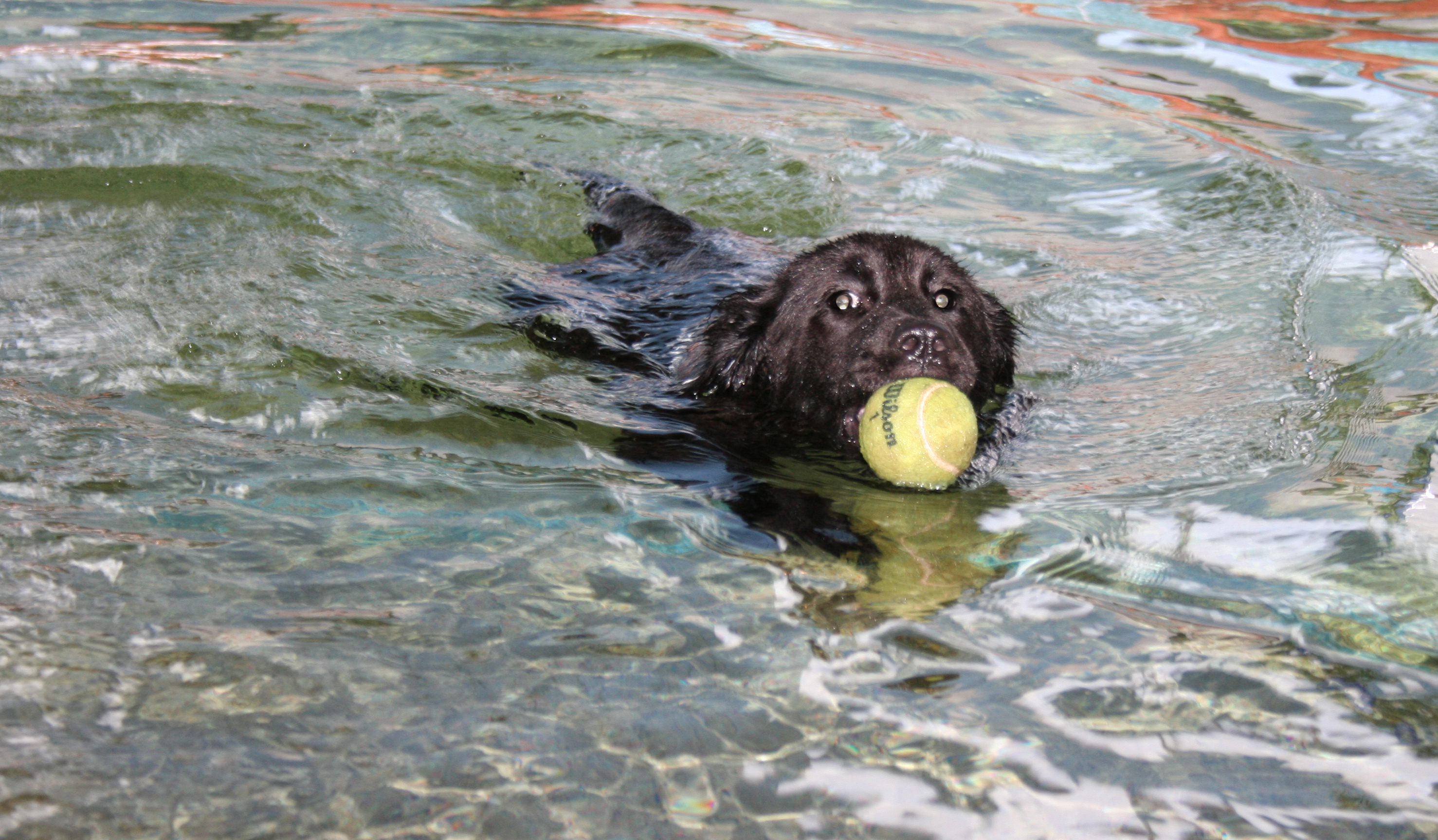
As summer comes to a close it seems the perfect time to revisit one of our most popular articles on installing a dog pool. We hope you enjoy and learn from our experiences.
I love living in Houston even in the summer, but the past week it’s just been too hot.
My mind keeps thinking about a nice cool splash in a pool and how Archie loves to swim at Urban Tails. Installing a pool at our dog center was a new experience for us and we definitely learned some lessons. So if your mind is telling you to install a dog pool for your guests keep reading for some insider tips.
- Know Your Why
Installation and maintenance of a dog pool is an investment so be clear on the reasons why you are doing it. For the business a pool can generate revenues, serve as a great marketing benefit and make your center unique.
For the dogs you can offer fun swim and play sessions or rehab services. Know the requirements in your state for therapy sessions if that is a goal and be prepared to design around this requirement. A pool installed just for fun swim sessions can benefit your business. Your pool can serve as a great feature for events at your center.
We did a survey of our clients prior to installing our pool. This is a great way to get objective data on level of interest and price ranges for services from your existing clients prior to spending any money.
- Know Your Options
A dog pool can be installed anywhere. Ours was an indoor in-ground pool. You do have the option of above ground and most pools are installed outdoors.
The services you want to offer will drive the design of your pool. You’ll need to decide on length, width and depth. For us it was important that dogs actually have room to swim so ours was 3 feet deep, 12 feet wide and 20 feet in length.
The best decision we made was the beach entry and installation of a large step on the deep end of the pool. This made it easy for dogs to enter and exit the pool in two separate areas.
Choosing your water treatment equipment is an important factor. Chlorine can be harsh on a dog’s skin and coat so we opted to use UV light as our primary treatment with weekly chlorine shocks. Salt water is another option we explored, but based on input from our pool company decided against it.
Selecting a pool company with a good service history and interest in learning about dog pools is very important. Our pump and water exchange was oversized for the amount of water in our pool.
Fun, Fun, Fun! Urban Tails Dog Pool from Susan Briggs on Vimeo.
- Know Dogs
Remember that to dogs the world is familiar or unfamiliar and this also applies to pools and swimming. Just because a dog swims does not mean they will be comfortable swimming in your pool on the first visit.
Additionally, many dogs do not know how to swim and are not comfortable initially getting into the water. To keep your pool a positive experience you need to go at the dog’s pace and let clients know it may take a few visits for their dog to start swimming. Do not let dog owners influence you to “just throw them in” so they are forced to swim. The dog will probably swim, but may also never want to get near your pool again.
Know your breeds as heavy stout built bulldogs, terriers, corgis and boxers may not swim and rather sink immediately to the bottom of the pool. This can also happen with tiny dogs so it is important to focus on safety measures.
- Know Safety
Dog life jackets come in all sizes and serve as important safety equipment for first time swimmers. The handle on top can also help when teaching a dog to swim. Keep the number of dogs in group swims below 10 and be careful mixing sizes. Pools increase excitement and arousal which can lead to accidents so set your lifeguards up for success. They need to be able to watch and know every dog in the group is safe.
It’s also important to focus on people safety in the pool area and to train your lifeguards to stay observant. Appropriate water attire including shoes are recommended and may be something you supply for your lifeguards.
Clients love to watch and even participate in swim sessions. Be sure to discuss with your attorney and insurance company prior to allowing them access to your pool area.
Maintenance of proper water quality levels requires frequent monitoring. Learn from your pool company and keep in touch with them to discuss any problems you encounter.
- Know Your ROI
For most businesses you will want your pool to be a good investment so it’s important to calculate the return on the investment. The cost to install an in-ground pool for dogs is about the same as a basic pool in your backyard. Our pool was paid back with revenues earned in 2.5 years after installation.
You should create a marketing plan for your pool services as part of your project assessment. Urban Tails had a focus on puppy programs so when we installed our pool we offered free puppy swim sessions monthly. These were very popular and served as a great way to introduce our business to new puppy owners. We also loved the community service aspect of teaching puppies to swim using positive methods.
My experiences operating a dog pool were very positive and encourage you to consider it for your business. Pools are not only a great way to survive the dog days of summer, but provide a lot of fun for the dogs and your team.
Are you considering a pool for your center? What questions do you have about installing or operating a dog pool?
Already have a dog pool; share your experiences including what would you do differently?








Susan,
Very timely. I am planning on having a pool built for the facility I am designing. My pool is 30 x 28 and includes several 3′ wide ledges at both 3″ and 6″ depths for the dogs to wade or sit in. On one end I am including a beach entry. The decking will include several drainesss and then surrounded by 10′ of artificial turf to better protect sod. It was suggested by the pool builder to install commercial grade filter and pump to better handle the hair and reduce the frequency of cleaning the filter.
Teresa, love the plans for your dog pool. I do think turf will help protect the sod and also keep the dogs and water cleaner. Keep us posted on your progress.
Thanks for the tips! My dog has always loved swimming, so I want to build a pool for him so that he can go swimming when he wants instead of trying to swim in the tub. You made some really good points about water safety so that my dog won’t get injured. I wouldn’t want any other dogs to get injured in my pool, so providing dog life jackets seems like a good way to keep them safe. A few of my friends have been meaning to teach their dogs how to swim, so having life jackets would be good to have when they come over to teach them how to swim.
Deanna, thanks for sharing that the safety tips will help keep your dog and your friends safe in your pool. Love that you are building a pool for your dog so he can enjoy swimming, have fun and enjoy your pool!
I am a dog lover and can do anything for my dog…would definitely install the pool for him.